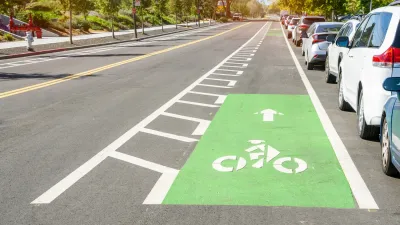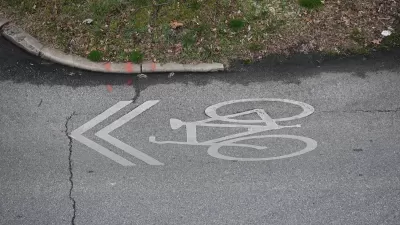Allowing cyclists to treat stop signs as yield signs does not negatively impact safety and can help people on bikes more effectively navigate roadways.

Two new studies affirm the benefits of the Bicycle Safety Stop, also known as the Idaho Stop or the bike stop-as-yield, reports Jared Sanchez in Streetsblog California.
Sanchez notes that cyclists aren’t the only ones who routinely treat stop signs as yield signs. “Of course, many people in cars also roll through stop signs when there are no other vehicles present; this is a common and logical behavior for all road users, though it carries different risks for people operating two-ton machines. For bike riders, stop-as-yield is essential for efficient riding because it conserves the momentum lost when starting after coming to a complete stop.”
One study showed that bike riders can safely navigate intersections and share the road with people in cars by treating stop signs as yields. However, “The study concluded that stop-as-yield laws would work better if states included information about them in driver handbooks — something even Idaho does not do.”
A second study revealed that almost all road users — people on bikes, walking, and in cars — reported occasionally breaking laws. While drivers and pedestrians reported flouting the law to save time, most cyclists reported they broke traffic rules for safety reasons. “Again, this study finds a need for better public education so people driving and biking can share the road safely.”
FULL STORY: New Studies Show No Downsides for Bicycle Safety Stop

Planetizen Federal Action Tracker
A weekly monitor of how Trump’s orders and actions are impacting planners and planning in America.

Map: Where Senate Republicans Want to Sell Your Public Lands
For public land advocates, the Senate Republicans’ proposal to sell millions of acres of public land in the West is “the biggest fight of their careers.”

Restaurant Patios Were a Pandemic Win — Why Were They so Hard to Keep?
Social distancing requirements and changes in travel patterns prompted cities to pilot new uses for street and sidewalk space. Then it got complicated.

Platform Pilsner: Vancouver Transit Agency Releases... a Beer?
TransLink will receive a portion of every sale of the four-pack.

Toronto Weighs Cheaper Transit, Parking Hikes for Major Events
Special event rates would take effect during large festivals, sports games and concerts to ‘discourage driving, manage congestion and free up space for transit.”

Berlin to Consider Car-Free Zone Larger Than Manhattan
The area bound by the 22-mile Ringbahn would still allow 12 uses of a private automobile per year per person, and several other exemptions.
Urban Design for Planners 1: Software Tools
This six-course series explores essential urban design concepts using open source software and equips planners with the tools they need to participate fully in the urban design process.
Planning for Universal Design
Learn the tools for implementing Universal Design in planning regulations.
Heyer Gruel & Associates PA
JM Goldson LLC
Custer County Colorado
City of Camden Redevelopment Agency
City of Astoria
Transportation Research & Education Center (TREC) at Portland State University
Camden Redevelopment Agency
City of Claremont
Municipality of Princeton (NJ)





























